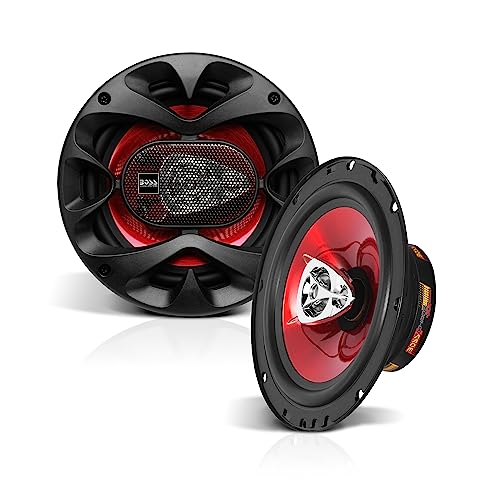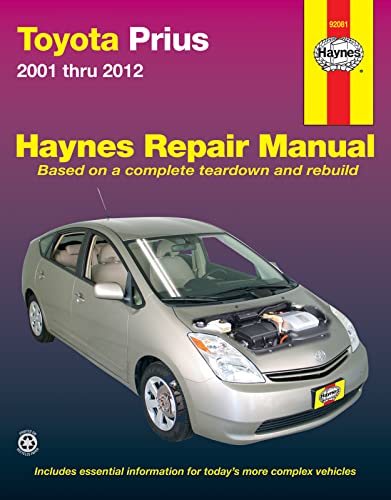As an Amazon Associate, I earn from qualifying purchases
If you’ve ever needed to work on your Toyota’s electrical system, you know how tricky those connectors can be. Knowing how to disconnect Toyota electrical connectors the right way saves you time and prevents damage to your vehicle.
In this guide, you’ll learn simple, step-by-step methods to safely unplug these connectors without frustration or risk. Whether you’re fixing a problem or upgrading parts, mastering this skill puts you in control and makes your job easier. Ready to get started?
Let’s dive in and make your Toyota maintenance smoother than ever.
Tools Needed
To disconnect Toyota electrical connectors safely and efficiently, having the right tools is essential. Using proper tools helps prevent damage to the connectors and wires. It also makes the job faster and easier. Prepare these tools before starting your work.
Basic Hand Tools
Start with a set of small screwdrivers. Flathead and Phillips screwdrivers are necessary. They help release clips or tabs on connectors.
Needle-nose pliers work well for gripping and pulling connectors gently. Avoid pulling wires directly to prevent damage.
A plastic trim removal tool can help pry connectors apart without scratching or breaking plastic parts.
Have a flashlight ready. It brightens tight spaces and helps you see connector details clearly.
Safety Equipment
Wear safety glasses to protect your eyes from debris or sparks. Electrical work can sometimes cause unexpected reactions.
Use insulated gloves to avoid electric shocks. They also protect your hands from sharp edges and hot surfaces.
Keep a fire extinguisher nearby. It is a good precaution against electrical fires.
Work in a well-ventilated area to avoid inhaling fumes from any damaged wires or connectors.
Locate Electrical Connectors
Locating electrical connectors is the first step to disconnect them safely. These connectors join wires to different parts of your Toyota. Finding them helps you avoid damage during repairs or inspections.
Connectors are usually placed where wiring needs to be joined or split. Knowing their location saves time and prevents mistakes. Let’s explore common places where you can find these connectors and how to recognize their types.
Common Connector Locations
Electrical connectors appear in many areas of your vehicle. Look under the hood near the battery and fuse box. They also appear inside the dashboard and behind the headlights. Door panels often hide connectors for power windows and locks. Sometimes, connectors attach near the engine or transmission. Check near sensors and switches too. These spots cover most connector locations in a Toyota.
Identifying Connector Types
Connectors come in different shapes and sizes. Some are rectangular with clips on the sides. Others are round with locking tabs. Plastic housings protect the metal pins inside. Pins carry the electrical signals safely. Color coding helps match connectors correctly. Some have rubber seals for water protection. Knowing the type helps you disconnect without breaking them. Always handle connectors gently to avoid damage.
Prepare The Vehicle
Preparing your Toyota vehicle is the first step before disconnecting any electrical connectors. Safety is very important. Taking the right precautions helps avoid damage to the vehicle and prevents injury. Follow these simple steps carefully to get ready.
Turn Off Ignition
Start by turning off the ignition. Make sure the engine is completely off. Remove the key from the ignition switch. This stops any electrical power from flowing through the system. It also prevents accidental sparks or shorts while working.
Disconnect Battery
Next, disconnect the battery to cut all electrical power. Use a wrench to loosen the negative terminal first. Remove the cable and keep it away from the battery. Then loosen and remove the positive terminal cable. This step protects you and the vehicle’s electronics during the connector removal process.
Release Connector Locks
Releasing connector locks is a key step in disconnecting Toyota electrical connectors safely. These locks keep the connectors firmly attached. They prevent wires from coming loose during driving or repairs. Knowing how to release them helps avoid damage to the connectors and wires.
Connector locks vary in style and design. Each type needs a specific way to release it. Understanding these differences makes the task easier and safer. It saves time and reduces frustration during vehicle maintenance.
Types Of Connector Locks
Toyota uses several types of connector locks in their vehicles. One common type is the tab lock. This lock has a small plastic tab that must be pressed or lifted.
Another type is the sliding lock. It slides sideways or forward to unlock the connector. Some connectors have a pull-up lock that lifts to release.
Push-button locks are less common but still appear. You press a button to free the connector. Each lock type secures connections firmly in place.
Techniques To Unlock Connectors
Press tabs gently to avoid breaking them. Use your thumb or a small tool like a flat screwdriver. Slide locks require a steady push in the right direction.
Lift pull-up locks carefully without pulling on wires. Avoid using force. Push-button locks release by simply pressing the button.
Work slowly and watch how the lock moves. Never rush to prevent damage. If a lock sticks, try repositioning your tool or finger.
Disconnect Connectors Safely
Disconnecting Toyota electrical connectors needs care. Doing it safely keeps the parts working well. It prevents damage and saves time. Follow the right steps to avoid problems.
Proper Pulling Methods
Hold the connector body, not the wires. Pull straight out without twisting or bending. Use gentle but firm force. Press any locking tabs before pulling. This stops clips from breaking. Use your fingers, not tools, for most connectors.
Avoiding Damage
Check for dirt or debris before disconnecting. Clean the area if needed. Avoid pulling on wires or cables. Never force a connector that feels stuck. Use a small tool only if needed and with care. Protect the connector pins from bending or breaking.
Credit: www.tacomaworld.com
Inspect And Clean Connectors
Inspecting and cleaning electrical connectors is a key step before disconnecting them. Dirt, corrosion, and grime can cause poor connections and electrical issues. Taking time to check and clean connectors helps keep your Toyota’s electrical system working well.
Careful inspection reveals problems early. Cleaning removes buildup that blocks signals. This process makes reconnecting easier and safer.
Check For Corrosion
Corrosion looks like green or white powder on metal parts. It weakens the connection and causes electrical faults. Check both sides of the connector carefully. Look for any damaged or bent pins too. Corrosion needs attention before proceeding.
Cleaning Tips
Use a soft brush or toothbrush to remove dirt and debris. Spray electrical contact cleaner on the connectors for better results. Avoid water or household cleaners that can cause damage. Let the connector dry fully before reconnecting. Handle connectors gently to prevent damage.
Reconnect Connectors
Reconnecting Toyota electrical connectors is a crucial step after any repair or maintenance. Proper reconnection ensures your vehicle’s electrical system works correctly. This process requires care and attention to avoid damage or poor contact.
Follow simple steps to reconnect connectors safely. Focus on aligning pins and securing locks to guarantee a solid connection.
Aligning Pins
Start by checking the pins inside the connector. Make sure they are straight and clean. Align the pins carefully with the matching socket. Do not force the connector. Gentle pressure helps avoid bending pins. Proper alignment prevents electrical problems and ensures a good fit.
Securing Locks
Once the pins are aligned, push the connector firmly together. Listen for a click or feel it snap into place. This means the locking mechanism engaged. Locks keep the connection tight and prevent it from coming loose. Double-check the lock by gently pulling the connector. It should not move or disconnect easily.

Credit: www.youtube.com
Test Electrical Systems
Testing the electrical systems is key after disconnecting Toyota electrical connectors. It ensures everything works correctly and safely. This step helps find any problems early before they cause bigger issues.
Always check the connections carefully. A loose or wrong connection can cause system failures. Testing confirms the system runs smoothly and the connectors are properly seated.
Verify Connection
Start by inspecting the connector visually. Look for dirt, corrosion, or damage on the pins. Clean any debris with a soft brush or cloth.
Next, reconnect the plug firmly. It should click or snap in place without force. A secure fit prevents electrical shorts or disconnections.
Use a multimeter to check voltage and continuity. This tool helps confirm power flows correctly through the connector. Testing each wire ensures no breaks or faults exist.
Troubleshooting Tips
If the system does not work, recheck the connector fit. Sometimes connectors look connected but are loose inside.
Inspect the wiring harness for cuts or pinches. Damaged wires block electrical signals and cause failures.
Test the related fuses and relays. A blown fuse or faulty relay can stop the system from operating.
Consult the Toyota wiring diagram for exact pin functions. This helps identify which wire to test for each system.

Credit: www.amazon.com
Frequently Asked Questions
How Do I Safely Disconnect Toyota Electrical Connectors?
Press the tab or clip firmly, then gently pull the connector apart without forcing it.
What Tools Are Needed To Disconnect Toyota Connectors?
Usually, no tools are needed; just your fingers. For tight connectors, a small flat tool helps.
Can I Disconnect Connectors Without Damaging Wires?
Yes, press the release tab fully before pulling to avoid wire or connector damage.
Why Won’t My Toyota Electrical Connector Disconnect?
The locking tab might be stuck or not fully pressed. Try pressing it again carefully.
How To Identify The Locking Mechanism On Toyota Connectors?
Look for a small tab or clip on the side of the connector; that’s the lock.
Should I Disconnect The Battery Before Unplugging Connectors?
Yes, disconnecting the battery prevents short circuits and protects the vehicle’s electrical system.
Conclusion
Disconnecting Toyota electrical connectors is simple with the right steps. Always handle connectors gently to avoid damage. Make sure the car is off before starting work. Check for clips or tabs that lock the connector in place. Press or lift them carefully to release the connector.
Clean connectors if needed to ensure good contact. Taking time and being careful saves you from future problems. Use these tips to safely disconnect connectors on your Toyota. Practice makes the process easier and safer each time.
As an Amazon Associate, I earn from qualifying purchases


